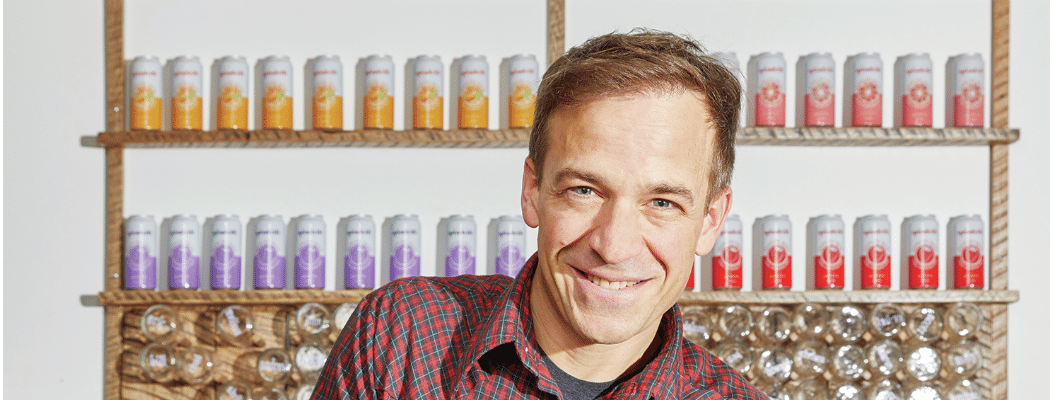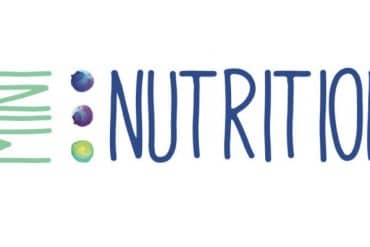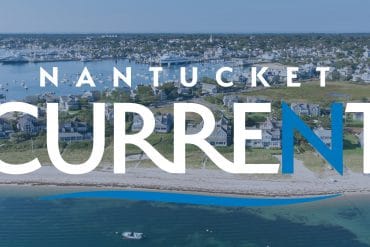How Spindrift founder Bill Creelman got his entrepreneurial start on Nantucket.
Sparkling water is the fastest growing segment in the beverage business. Some believe that seltzer will eventually eclipse soft drinks and sodas entirely. In this bubbling marketplace, Spindrift has risen to the surface as an all-natural alternative to artificially sweetened sparkling waters. Launched by Bill Creelman in 2010, Spindrift has grown exponentially and shows no signs of going flat. While the company might end up being Creelman’s crowning achievement, Spindrift is just the latest venture in a long entrepreneurial journey that began on Nantucket.
 N MAGAZINE: How and when did you first discover Nantucket?
N MAGAZINE: How and when did you first discover Nantucket?
CREELMAN: My introduction to Nantucket was “Still Waters” on Eel Point, the family home of W.S. Keith. It was a summer cottage that had served as a pontoon plane hangar for their family years earlier. They would land on Madaket Harbor and winch the plane up off the beach on railroad ties. They were kind enough to let us rent [the cottage] every summer for a few weeks starting when I was in elementary school. It was really simple but spectacular. We might leave the house a few times during our visit but mainly we fished, shell-fished and mucked around.
N MAGAZINE: You grew up on a farm in western Massachusetts and attended Georgetown University, but you could argue that your entrepreneurial roots trace back to a charter fishing boat on Nantucket.
CREELMAN: No question. When I got into high school, my parents allowed my brother Craig and I to start spending a lot more time on-island on one condition: We had to support ourselves. We were too young to get real jobs so we would knock on doors and offer to do work. First it was odd jobs, then “dump runs,” a short stint at Annie and the Tees and eventually a student painting business. Knocking on doors was really hard and humbling but invaluable. Finally, around the age of seventeen, I was introduced to the docks by my friend Davey Desloge, who was a mate on Just Do It Two.
N MAGAZINE: And then you got into charter fishing?
CREELMAN: Dave Martin, captain of The Flicka, gave me my first chance, and we worked together for years. Along the way, I did stints with Ray and Bob DeCosta aboard Albacore as well as captains Marc Genthner, Freddie Tonkin and Tom Mleczko. Josh Eldridge from Critter Cruisers and I lived on our boats on Straight Wharf. I owe this group a huge debt of gratitude. This was really my family on-island. They are all entrepreneurs who shared how their businesses were run as well as how to treat customers and each other respectfully. It was competitive for sure, but by the end of the day, we’d all sneak down to the back bar at the Ropewalk as friends. It was a magical time. It was actually so impactful that I named the company “Spindrift” after this time in my life. Dave and I were pounding back from Great Point, getting soaked by the spray off the waves, and he asked me if I knew what the wind-blown surf was called. “Spindrift!” I tucked away the word and ten years ago—when I needed a word that meant refreshing and bubbly—there it was.
 N MAGAZINE: How did you end up going from a charter fishing boat to opening Nantucket Harvest? What were some of the products you offered, what was the business model and how did they evolve?
N MAGAZINE: How did you end up going from a charter fishing boat to opening Nantucket Harvest? What were some of the products you offered, what was the business model and how did they evolve?
CREELMAN: I eventually ended up at Georgetown, and my senior year, I took an entrepreneurship course. As its only requirement, you had to write a business plan due on the final day of the semester. I chose “Nantucket Smokehouse,” which was intended to be an on-island operation smoking local seafood. Turned out, there were already people doing that really well— like Walter Sadowski at Straight Wharf. So, we pivoted to offering indigenous goods from the island and selling them year-round by mail out of a 120-year-old mill in New Bedford. We partnered with the remarkable food suppliers on-island including Straight Wharf (smoked bluefish pâté), Juice Bar Ice Cream (Crantucket!), Island Herbs and Sayle’s Seafood. We eventually added crafts like scallop shell Christmas lights from Bambi Mleczko. One summer, we hosted the Nantucket Harvest Series where we hosted lectures and interactive events (“Learn to Quahog with Spanky Kania!”). The problem with any food-gift business is that it’s seasonal, so in winter, particularly Thanksgiving through Christmas, we were very busy. In summer, we were slow.
N MAGAZINE: How did one of the products you were offering at Nantucket Harvest turn into your next big business?
CREELMAN: A few years into Nantucket Harvest, we were lucky enough to meet Nigel Dyche and Sarah Leah Chase—two brilliant food minds who had started Nantucket Offshore Seasonings. We combined forces and began selling a cocktail rimming salt in 2001 for Bloody Marys, margaritas and rum drinks. It was my first venture into the beverage space. Our “rimmer” line took off and we continued to add mixers, bar ingredients and cocktail sodas under the name “Stirrings.” Our timing turned out to be good because it coincided with the renewed interest in cocktails.
N MAGAZINE: Stirrings’ genesis story sounds like the true entrepreneurial adventure. What kind of risks were you taking to build that business?
CREELMAN: Startup food and beverage business is challenging with expensive startup costs, low margins and evolving consumer tastes. Looking back, my partner, Gil MacLean, and I took on a ton of risk, especially in how we capitalized the business, which was both personal debt (friends and family) and bank loans. When you take this approach, you are constantly teetering right on the edge—just barely balancing losses and cash flow. It makes for a long Thanksgiving when you owe money to all the people sitting around the table.
N MAGAZINE: You eventually sold Stirrings to Diageo. How did that inspire your next venture?
CREELMAN: We were incredibly fortunate to exit Stirrings to Diageo, but there were things that remained unresolved for me. On the personal front, I loved our Stirrings team and culture, but I felt like I could have done a better job if I had the chance. And from a product standpoint, I had a different appreciation and understanding of beverage formulation. It seemed to me there was an opportunity to get away from the garbage in sparkling beverages—concentrates, synthetic flavor systems, aspartame—and replace them with simple, fresh ingredients. By this time, my wife, Harley, and I were cooking a lot. When you cook a great meal, you don’t start with a synthetic flavor that simulates the flavor you want to create; you start with a seasonal whole ingredient! This simple approach informed, and continues to guide, everything we do at Spindrift. I began the process in my kitchen in Boston adding a squeeze of fresh juice to sparkling water, and after a period of trial and error, we were off.
 N MAGAZINE: Can you pinpoint a critical turning point where you were at the edge of the abyss but were able to hang on and power through to the other side?
N MAGAZINE: Can you pinpoint a critical turning point where you were at the edge of the abyss but were able to hang on and power through to the other side?
CREELMAN: In the beginning of Spindrift, I ran into a variety of issues that almost made me turn my back on the business. When we ran our first batch of Spindrift, we were informed by our copacker that they were unable to produce our product going forward because the pulp was clogging the lines and fillers and had ground the plant to a halt. It was the beginning of many complaints about the complexity of our product. Following this complication, Spindrift started out as a bottled product – it was glass, refrigerated and had an inch of pulp on the bottom. I received a lot of noes from retailers when attempting to sell the product. The early product took up a lot of space, needed to be refrigerated because it was a fresh product and cost $3 a bottle—it was overall very expensive for both the retailer and customer. After a series of trial and error, Spindrift figured out how to convert to non-refrigerated storage with a longer shelf life than the first batch. While at the time it was difficult, each challenge made the company smarter, faster and ultimately more successful.
N MAGAZINE: Spindrift is growing exponentially each year. What are the core elements of the product that have enabled it to compete with the big brands?
CREELMAN: Everyone knows what flavored sparkling water is thanks to successful brands like Polar, LaCroix and the dozens of others. The sparkling water category is the fastest growing in beverages and we believe will replace soda one day in volume. But these products are all made the same way with “natural flavors” and sparkling water. Our challenge, and now mission, is to inform consumers that there is another option. Spindrift is made with sparkling water and real squeezed fruit, that’s it. We hope that people will try our product as they explore sparkling waters and a subset will come back for our differentiated flavor and clean, transparent ingredient deck.
N MAGAZINE: The big trend in the alcohol industry is toward hard sparkling. Does Spindrift have any plans in that direction?
CREELMAN: Ha! Well, for now, we’re committed to our core product proposition—sparkling water and real squeezed fruit. And you can make your own spiked Spindrift really easily—just add booze! It’s a pretty great mixer.
N MAGAZINE: In each of these ventures, you seem to have been entering industries with very little background or experience in them. What’s your process in trying to accelerate the learning curve?
CREELMAN: True. But I think entrepreneurs have to have a certain amount of naiveté. If you knew how much work and time it would take, you’d never do it! My approach is to hire really great, smart, values-driven people with relevant experience but also a willingness to learn. The right team can close a lot of gaps.
N MAGAZINE: What piece of advice would you give aspiring entrepreneurs who are trying to get a business off the ground?
CREELMAN: There are going to be struggles along the way with the beginning of any business, even an established business. A critical part of leading an organization is to purposefully manage fewer things better—we say, “Simplify to Amplify.” This means having the discipline to retire parts of the business that are not working—or even partially working—in order to clear bandwidth for the big priorities.
N MAGAZINE: Are there any fundamental pitfalls that you would warn aspiring entrepreneurs to avoid?
CREELMAN: As a young founder and CEO, I felt I had to make every decision. This led to the “hovering founder” syndrome, which is impossible for any organization. At Spindrift, I prioritize adding world-class talent and bringing in people whom I deeply respect and empower. That has been a critical part of the company’s success.
N MAGAZINE: What three words best describe your philosophy in business?
CREELMAN: The values that hang in our offices in Boston are trust, agility, innovation, ambition, collaboration, respect. Is that three?
N MAGAZINE: What other industries interest you?
CREELMAN: I wish I had more time to put toward nonprofits, especially agriculturally minded ones. I am really proud of Spindrift’s ten-year membership in 1% for the Planet, which has led to some exciting work with groups like Sustainable Nantucket over the years. I am informally involved in the organic farm in our town, “Land’s Sake,” but between Spindrift and my four kids, I don’t have time for much else.
N MAGAZINE: In addition to Sustainable Nantucket, what is your relationship with the island today?
CREELMAN: I am lucky enough to have maintained a bunch of relationships on-island, where I visit as often as time permits. From Kemar and Charlie at Nantucket Fish and Dairy, to Matt at Something Natural, to Elga and team at Provisions, and Cam and Corey [Bill Fisher Tackle] to name a few. My executive team and board come out each fall for three days to indoctrinate them into the traditions of the island and visit our accounts. I feel incredibly indebted to Nantucket—the people, the food. I’m very lucky.








